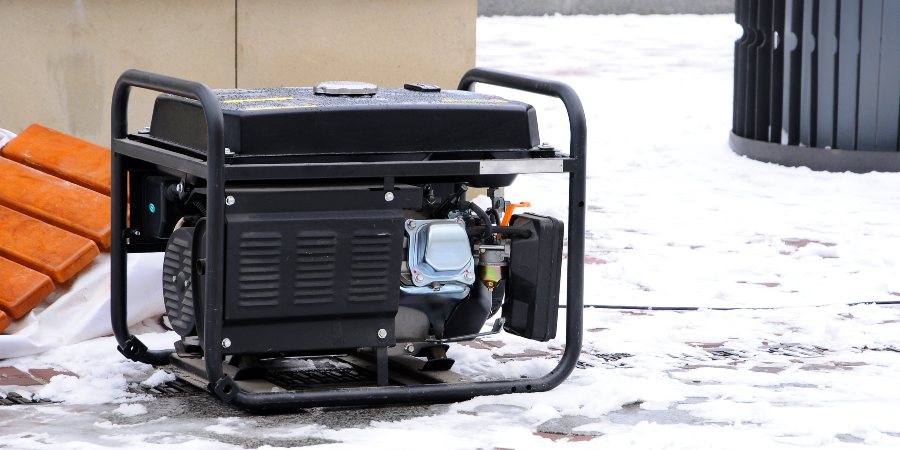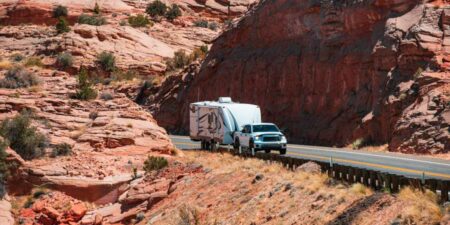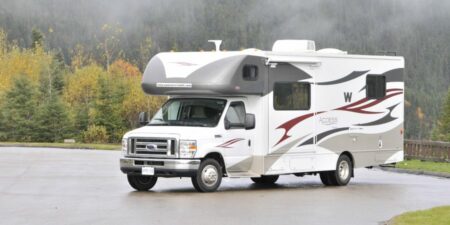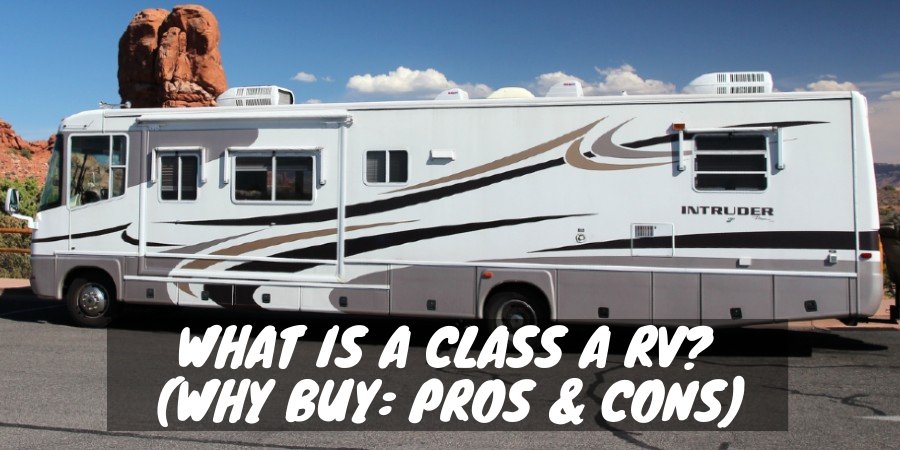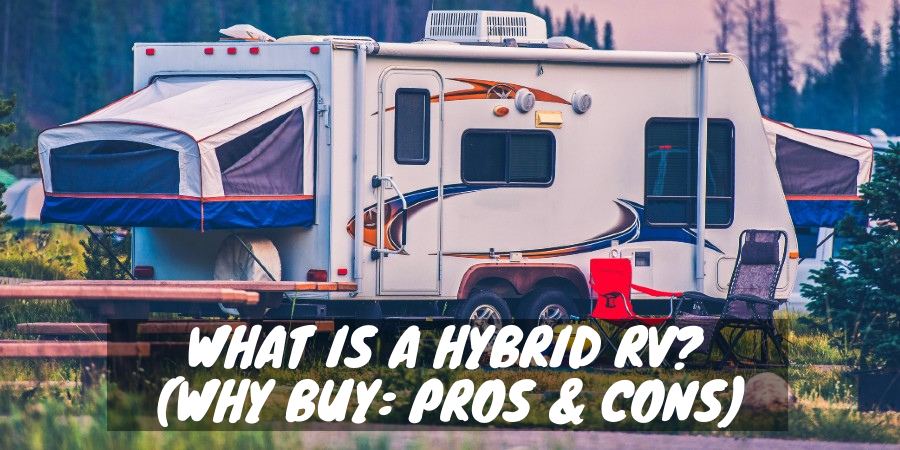Campers have used electrical generators to visit the woods for decades. What is an RV generator, how does it work, and what can you do if it doesn’t work? These are a few of the questions to cover in RV Generator Basics.
RV Generator Types
RV generators have a simple job: convert combustion power into electrical power. RV generators are fueled by gasoline, diesel, or propane (LPG), and their output is 110-volt alternating current (AC), like the electricity that powers your home.
Campers and tailgaters use generators to power appliances, air conditioners, lighting, computers, and other equipment for life’s conveniences away from home.
RVers use one of two types of generators: built-in or portable. The advantage of a built-in generator (called a Genset) is that it’s ready to use. It’s connected to the onboard fuel source, and the output is connected to the travel trailer or motorhome’s 110-volt electrical system. Turn it on and outcomes electrical power.
- Performance Series
- Starting Watts – 10,000 Watts
- Running Watts – 8000
- Engine Brand – Firman 4 Stroke, 439 CC, 15 HP, 74dB
- Recoil/Electric/Remote Start
A portable generator requires that fuel be added, and an electrical cord is plugged in to receive the generated electricity. Tenters use portable generators for the same reason they prefer tents: portability.
RV Generator Operation
As explained in RV Electrical Systems, the measurement of electricity (the flow of electrons) is called current and is measured in amperes or amps (A). Voltage (V) is the pressure that moves the electrons along the wires.
The generator output is measured in watts and kilowatts. A watt (W) is a measurement of energy that’s equal to one amp of current powered by one volt of electrical pressure. The formula is W = A × V.
- Switch between gasoline (11,000 surge watts, 8,300 running watt) and propane (9,500 surge, 7,500 running) with the simple turn of…
- Voltage easily goes from 120V to 240V, perfect for transfer switches and emergency backup
- Electric start powers the 457cc 4-stroke OHV engine with the turn of a key
- 6.6-gallon tank provides up to 8.5 hours of half load run time
- Includes four 120V GFCI outlets (5-20R), a 120V 30A twist lock outlet (L5-30R), a 120V/240V 50A outlet (NEMA 14-50R), a 12V DC…
The electrical output of RV generators ranges from 2.5 to 17 kilowatts (2,500 to 17,000 watts).
What is the best size generator for your RV? The answer depends on how much electricity you need to power your camping lifestyle. You can’t run a 1,000-watt (1 kW) microwave from a 600-watt generator.
Add up the watts needed for the appliances you use, and you’ll have an estimate of the generator output required. Make sure the generator output exceeds your power needs.
For example, an RV air conditioner uses 1,200-2,000 W, a coffee maker about 900 W, a computer about 100 W, and an electric heater uses about 1,500 W.
RV Generator Troubleshooting
Most RV generators are trouble-free. However, problems can arise. Here are some practical tips for a long and productive RV generator life.
- 12, 000 peak watts/ 9, 500 Rated watts (gasoline) & 10, 800 peak watts/ 8, 550 Rated watts (LPG)
- Dual fuel capability allows you to choose between gasoline & LPG fuel sources; great for emergency situations or natural disaster…
- The 457cc, single cylinder, 4-stroke, air cooled, OHV engine with electric start is protected by a durable powder coated frame
- A 8 gallon fuel tank gives you up to 12 hours of continuous operation at half load when running on gasoline
- (4) 120V 20A AC outlets, (1) 120V/240V 30A twist-lock outlet, (1) 120V/240V 50A outlet, (1) 12V DC output provide ample space for…
- Get an owner’s manual on your generator to ensure you know how to operate and troubleshoot it safely.
- The number one problem that RV generators face is lack of use. Ensure you run your generator at least an hour a month to fight internal corrosion.
- Follow manufacturer instructions for oil change, fuel filter change, and fuel age, as they can greatly impact operation.
- Make sure your generator has a spark arrestor if using it in a national forest or where a brush fire could start if the generator backfires.
- Be aware that RV generators don’t operate the same at sea level as they do atop a 6,000-foot mountain because fuel mixes with air to combust. Air is thinner at higher altitudes.
- Respect the law and your RV neighbors. Don’t use your generator if nearby campers are sleeping.
Common Questions Beginners Have Regarding RV Generators
1. What is an RV generator?
An RV generator is a device that creates electricity for recreational vehicles (RVs). It’s like a small power station that helps run appliances and lights when you’re not connected to a main power source.
2. Why do I need a generator for my RV?
You need a generator to provide electricity to your RV when you’re camping or traveling in areas without electrical hookups. It powers things like your fridge, lights, and air conditioning.
Want to Connect With a Community of Over 1,078 RV Enthusiasts?
3. How do I choose the right size generator for my RV?
The size of the generator you need depends on how much power your RV requires. You should check the wattage of your appliances and add them up. A generator that can produce a bit more power than your total need is a good choice.
4. Can I run my RV generator all the time?
It’s not recommended to run your RV generator continuously without breaks. Running it for long periods can wear it out quickly. Also, it’s important to consider fuel usage and noise, especially in campgrounds.
5. How do I maintain my RV generator?
Regular maintenance includes checking oil levels, replacing air filters, and ensuring the generator is clean and free of debris. Also, run it regularly, even when you’re not using your RV, to keep it in good condition.
6. Are RV generators noisy?
Yes, some RV generators can be noisy, but newer models are designed to be quieter. It’s important to consider noise levels, especially if you’ll be camping in areas where noise restrictions apply.
RV Basics: RV Generator (Video)
"Man cannot discover new oceans unless he has the courage to lose sight of the shore."
-- Andre Gide

